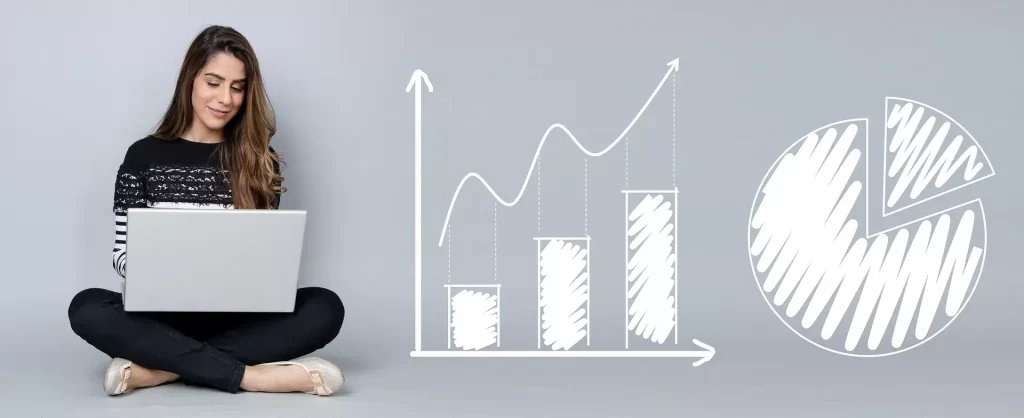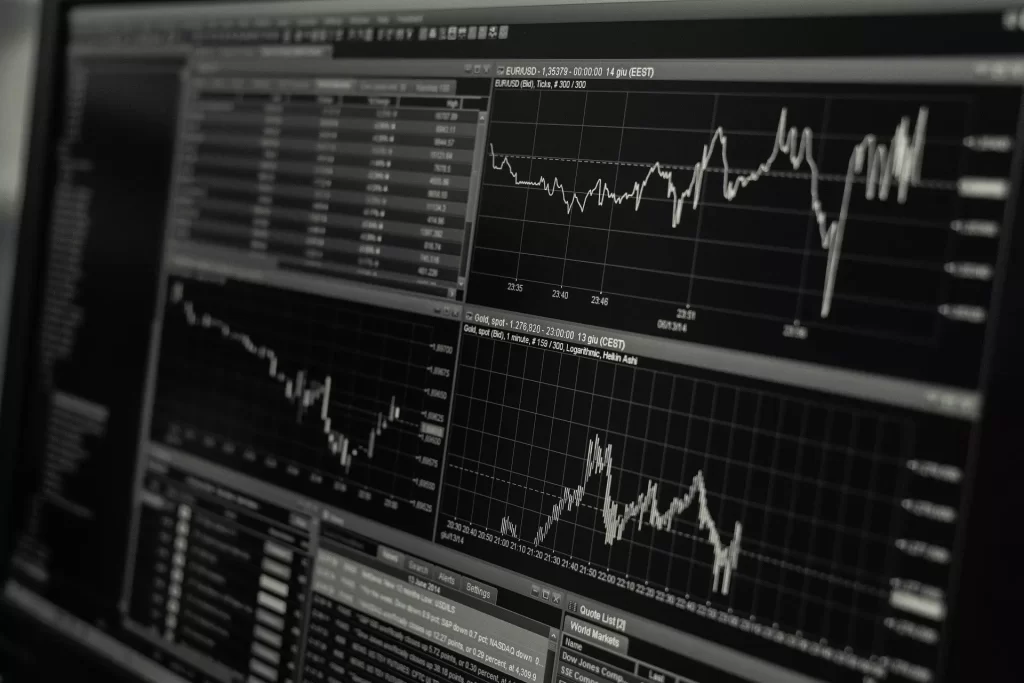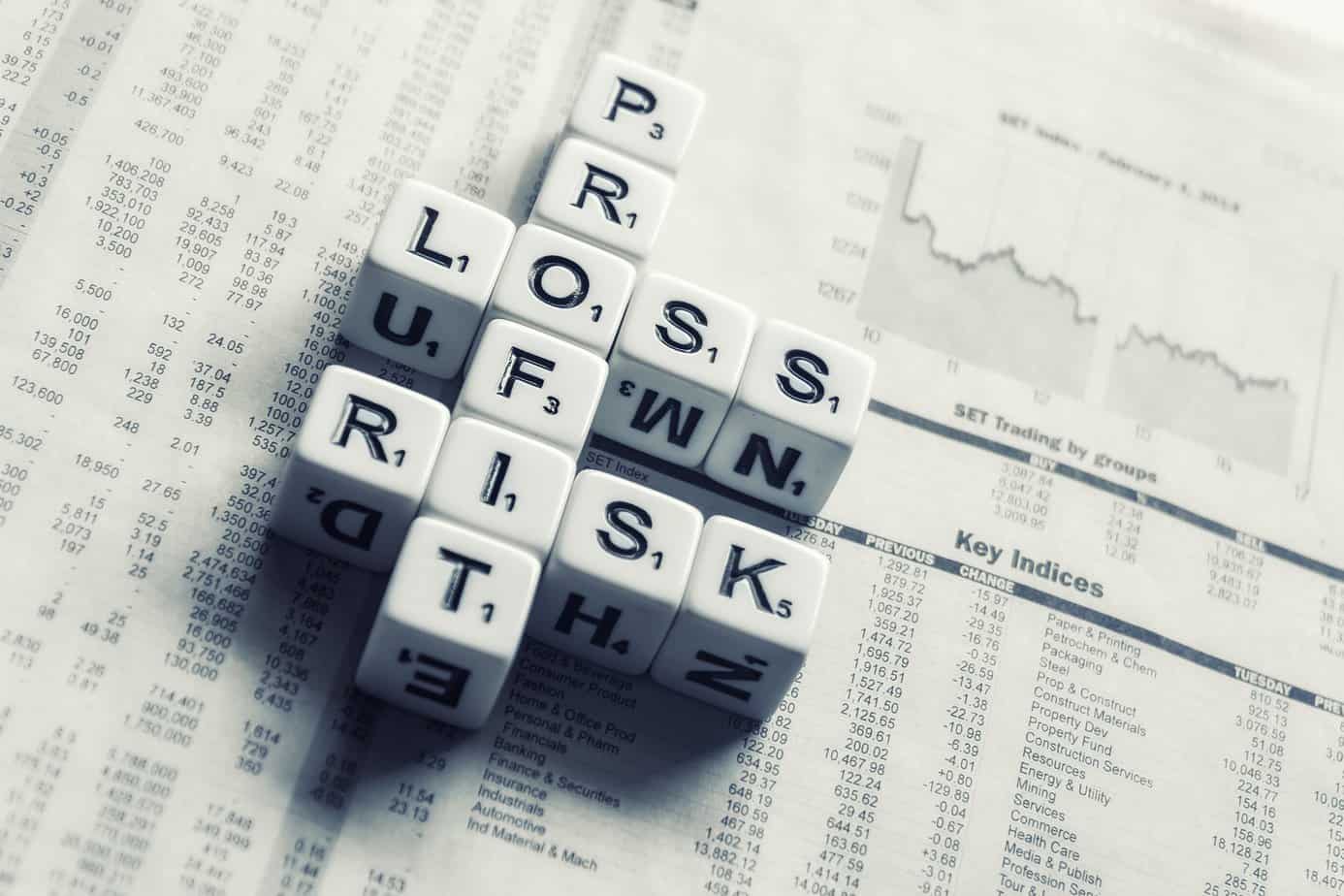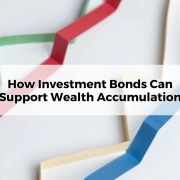Should I change my risk level when markets are volatile?
Table of Contents
ToggleThere’s no doubt that the stock market has been incredibly volatile throughout 2022 so far. Bond markets too have contributed to volatility due to interest rate and inflation uncertainty. For some people, this volatility can be nerve-wracking and lead them to consider changing their investment strategy. However, making a change in your risk level based on market conditions can be tricky. Let’s take a closer look at when it might be appropriate to make a switch and when it’s better to stay the course.
What is risk level and why should you care about it?
When it comes to investment risk, there are generally two schools of thought. The first is that higher risks lead to higher potential rewards, and the second is that you should only invest in what you understand and are comfortable with. There’s no right or wrong answer, but it’s important to understand your own risk tolerance before making any investment decisions.
So what is the risk level? Generally speaking, it’s a measure of how much volatility an investment can experience. For example, stocks are considered to be more risky than bonds because their prices can fluctuate more dramatically. That doesn’t mean that stocks are always a better investment than bonds; it just means that they tend to be more volatile.
Why should you care about your risk level? because it can help you determine which investments are right for you. If you’re uncomfortable with the idea of losing money, then you may want to focus on safer investments like bonds. On the other hand, if you’re willing to take on a little more risk in exchange for the chance of higher returns, then stocks may be a better fit. Ultimately, it’s up to you to decide how much risk you’re comfortable with. But understanding your risk tolerance is an essential part of making informed investment decisions.
How do markets affect your risk level
When it comes to investment risk, there are a few things to keep in mind:
- All investments carry some risk. There’s no such thing as a sure thing, and even the safest investments can lose value. That’s why it’s important to diversify your investment portfolio and not put all your eggs in one basket;
- Market conditions can have a big impact on investment risk. When markets are strong, there’s less risk of losing money. However, when markets are weak or volatile, there’s more risk that investments will go down in value; and
- It’s important to remember that risk is often relative. What seems risky to one person might not seem so risky to another.
Ultimately, each individual has to decide how much risk they’re comfortable with and make investment decisions accordingly.

When you’re investment planning, one key question we ask is how different types of markets will affect your risk level. For example, if you’re looking at a volatile market, you’ll need to be comfortable with a higher potential for loss in order to invest. On the other hand, a less risky market may offer lower potential returns. So how do you know which is right for you?
The answer, of course, is that it depends on your investment goals. If you’re investing for the long term, you may be willing to take on more risk in order to achieve higher returns. However, if you’re investing for a short-term goal, like saving for a down payment on a house, you’ll likely want to choose investments with less risk.
No matter what your investment goals are, it’s important to understand how markets can affect your risk level. By doing so, you can make sure you’re comfortable with the level of risk you’re taking on and the potential rewards you could earn.
What are some things you can do to lower your risk level
Investment risk can feel like a guessing game. But there are some tried-and-true methods you can use to lower your risk level.
No one wants to lose money on an investment, but unfortunately, there is always some risk involved. While you can’t completely eliminate risk, there are certain things you can do to minimise it. Here are four tips to help you reduce investment risk:
Diversify your portfolio
Don’t put all your eggs in one basket. Invest in a variety of assets, including stocks, bonds, and real estate. This way, if one investment goes sour, you’ll still have others that can provide stability and growth.
Research investments before you buy
Understand what you’re buying and why you’re buying it. This will help you make more informed decisions and avoid rash moves that could end up costing you dearly.
Have a plan
Having a clear investment strategy will help you stay focused and disciplined when the markets get volatile. Having a plan gives you a roadmap to follow, so you’re less likely to make impulsive decisions that could jeopardise your investment goals.
Stay patient
Don’t expect overnight success with your investments. It takes time for them to grow and mature. If you cash out too soon, you may not give them the chance to reach their full potential and earn the returns you’re hoping for.
Following these tips won’t guarantee investment success, but they can help you tilt the odds more in your favour. By taking steps to reduce risk, you’ll increase your chances of achieving your financial goals.

You can also choose to invest in lower-risk options. For example, bonds tend to be less volatile than stocks, so they may be a good choice for investors who are looking to minimise risk.
Finally, keep in mind that time is on your side when it comes to investment risk. The longer you’re invested, the more time you have to weather any short-term market volatility. So, if you’re worried about taking on too much risk, remember that you can always start small and increase your investment allocation over time. After all, you need to choose your investments that can help you reach your goals.
What are some things you can do to raise your risk level
If you’re looking to take on more investment risk, there are a few things you can do to increase your risk tolerance:
- You can start by investing in more volatile assets, such as stocks and commodities. These asset classes tend to have higher potential returns, but they also come with more downside risk. If you’re uncomfortable with the thought of losing money, you can always keep some cash on hand to help mitigate your losses.
- You can diversify your investment portfolio by including investments in different asset classes and geographical regions. This will help to reduce your overall risk level while still giving you the potential to earn strong returns.
- Remember that investment risk is just one part of your overall financial picture. Be sure to consider all of your financial goals and objectives before making any decisions about how much risk you’re willing to take on.
By taking a thoughtful and strategic approach to investment risk, you can help ensure that you’re prepared for whatever the market might throw your way.
Should you make any changes to your risk level when markets are volatile?
When it comes to investment advice, there’s one question that everyone seems to be asking lately: should you make any changes to your risk level when markets are volatile? And the answer, as always, is “it depends.”
On the one hand, market volatility can be a sign that trouble is on the horizon. If you’re already invested in a volatile asset, you may want to reconsider your position and reduce your exposure to risk.
On the other hand, market volatility can also present opportunities for savvy investors. If you believe that the market will eventually rebound, then you may want to consider taking advantage of the dip by increasing your investment.
Many experts (including myself) recommend staying the course with your investment strategy, especially if you’re investing for the long term. After all, market volatility is just part of the investment landscape. Over time, markets have a tendency to trend upward, so hang in there, and your investment is likely to recover.

Of course, there’s no guarantee when markets will rebound, so it’s important to consider your risk tolerance when making investment decisions. If you’re comfortable with a little volatility, then staying the course may be the best strategy for you. But if you’re feeling uneasy about your investment, it might be worth getting in touch for a chat so we can work through your concerns.
If you’re looking for some guidance, staying the course during volatile markets is a good place to start. Ultimately, the decision of whether or not to change your risk level is a personal one. There’s no right or wrong answer, but there are definitely things to consider before making any decisions. If you’re ever unsure, it’s always best to discuss it with a financial adviser so we can explain the benefits and disadvantages clearly.
When is the right time to make a change?
Investment risk is often thought of as a binary choice—either you’re willing to take on a lot of risk or very little risk. But investment risk is more like a volume knob that you can dial up or down depending on your investment goals, time horizon, and personal tolerance for market swings. So, when is the right time to make a change to your investment risk level? Here are a few things to consider:
- Are your investment goals still the same? Over time, your investment goals may change. For example, you may be saving for retirement and also have shorter-term goals like saving for a down payment on a house. As you get closer to retirement, you may want to dial down the risk in your portfolio so that you don’t lose any hard-earned savings.
- Has your time horizon changed? Your time horizon is the amount of time you have until you need to access your investments. If you have a longer time horizon, you can afford to take on more risk because you have more time to weather market volatility. However, if your time horizon has shortened–say, you’re now five years from retirement instead of 10 years–you may want to reduce the risk in your portfolio.
- How do you feel about market swings? It’s important to know your personal tolerance for market volatility before making any changes to your investment risk level. If the thought of seeing your investment account balance go down makes you nauseous, it may be time to dial down the risk. On the other hand, if you’re comfortable with some ups and downs in your investments, then taking on more risk may not be a problem.
Ultimately, there’s no single “right” answer when it comes to investment risk–it’s a personal decision based on your individual circumstances. But by considering these factors, you can make a well-informed decision about whether or not it’s time to make a change to your investment risk level.
At Wealth Factory, we conduct risk profiling to ensure you are not taking on more risk, or are exposed to more volatility than you can handle. Average investment returns are made up of the total return over a number of years divided by the number of years. As an example, if a balanced investment portfolio (70% growth assets) generates 6.8% on average, as an example, some returns will be negative and some returns will be significantly higher. As shown in the below table, the expected range of returns is -18.1% to 22.8%, and the number of years with a negative return is 1 in 5.
The return on this page should be used as a guide only and should not be considered a definitive representation of long-term historical performances.
Portfolios Historical Returns/Period: 30 April 2022 to 30 April 2022
| Cash | Conservative | Moderately Conservative | Balanced | Growth | High Growth | |
|---|---|---|---|---|---|---|
| Annual Return | 3.6% | 5.6% | 6.1% | 6.8% | 7.3% | 7.7% |
| Annual Average Real Return | 1.1% | 3.1% | 3.6% | 4.2% | 4.8% | 5.1% |
| Worst 1 Year Return | 0.0% | -2.4% | -10.6% | -18.1% | -26.8% | -31.2% |
| Best 1 Year Return | 7.8% | 11.5% | 17.1% | 22.8% | 29.7% | 33.5% |
| Chance of Negative Return | 0 | 1 in 26.7 years | 1 in 7.7 years | 1 in 5.1 years | 1 in 4.4 years | 1 in 3.6 years |
| Probability of Negative Return | 0.0% | 3.8% | 12.9% | 19.6% | 22.9% | 27.9% |
The above table shows the actual historical returns on Mercer’s five Model Risk Portfolios (Cash Portfolio excluded). The returns are calculated using the current Mercer’s Strategic Asset Allocation (SAA), which may slightly differ from the Lifespan’s SAA.
What happens if you don't take any action when markets are volatile?
The portfolios we run usually include some form of rebalancing of asset allocation or investments in between reviews (if you are receiving ongoing advice). This is important because it means as the value of growth assets drops, more growth assets are usually being purchased ready for the rebound. When the market recovers, the growth assets will be sold off to keep you in line with your risk profile and help weather the next financial event.
Well, you could end up missing out on some great opportunities. On the other hand, you could also avoid some costly investment mistakes. It really depends on your investment goals and risk tolerance.
That really depends on how comfortable you are with risk. If you’re the type of investor who gets queasy when markets are down, then it might be best to take a more conservative approach. However, if you’re willing to stomach some short-term losses in order to achieve long-term gains, then sticking to your investment strategy is probably the best course of action.
If you sell when markets are down, you’ll obviously lose money in the short term. But, depending on the severity of the market decline, you could also miss out on a rebound. It’s generally not possible to pick the market and the best time when the best time is to sell without the benefit of hindsight. Looking back is easy; looking forward—forget it. Selling out when markets are down is a decision usually followed by regret, as we saw after the global financial crisis.
The market volatility of late may have you second-guessing your investment strategy. Before making any rash decisions, it’s important to understand what your risk level is and how it affects your portfolio. Markets will always fluctuate, so there isn’t necessarily a “right time” to make a change – the key is being proactive and aware of how these fluctuations impact your personal risk tolerance. If you are feeling uncomfortable with your current risk level, please contact me for a consultation; I would be happy to help devise a plan that meets your needs during this uncertain time.









